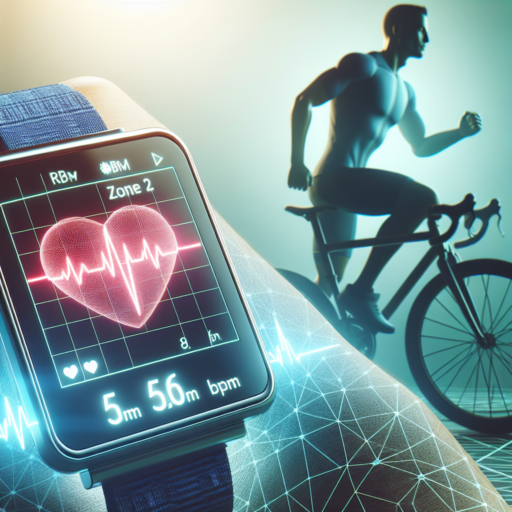No se han encontrado productos.
What is an optimal ground contact time?
The concept of optimal ground contact time is pivotal in the world of running, athletics, and various sports disciplines that require efficient movement. Ground contact time (GCT) refers to the duration your foot spends on the ground with each step during motion. Achieving an optimal GCT is crucial for enhancing performance and minimizing injury risk, as it ensures the most efficient use of energy during movement. But, what exactly constitutes this optimal time frame?
Generally, a shorter GCT is seen as advantageous, especially in speed and endurance sports where quick foot turnover is essential. The quicker an athlete’s foot leaves the ground, the less energy is expended, allowing for a more efficient and faster motion. Therefore, an optimal GCT is often associated with improved running economy, allowing runners to maintain a faster pace for longer periods without increasing their rate of fatigue. However, the exact “optimal” time can vary widely among athletes due to differences in biomechanics, muscle power, and overall running technique.
To achieve an optimal GCT, athletes and coaches focus on targeted training regimens that include strength training, plyometrics, and technique drills. These exercises aim to improve leg strength and elasticity, which are key factors in reducing ground contact time. Understanding and applying the principles behind optimal GCT can significantly impact an athlete’s performance, pushing them towards their peak potential.
What is a good ground contact time on an Apple Watch?
Understanding good ground contact time on an Apple Watch is crucial for runners looking to improve their performance. Ground contact time, or GCT, refers to the amount of time your foot stays in contact with the ground during each step of your run. While the ideal GCT can vary based on an individual’s running mechanics and speed, a general range to aim for is between 200 to 300 milliseconds. This metric is pivotal as it provides insight into your running efficiency and balance — the lower the time, the more efficient the run.
The Apple Watch utilizes advanced sensors to track your GCT, offering a detailed analysis of your running form directly on your wrist. To optimize your running performance, aiming for a GCT within the aforementioned range is advisable. However, it’s important to note that achieving a «good» ground contact time also depends on factors such as your physical condition, running pace, and individual biomechanics. Therefore, comparing your metrics with established norms should always be done with these considerations in mind.
Besides focusing on achieving a good ground contact time, runners should also pay attention to other related metrics provided by the Apple Watch. These include stride length and cadence, which are equally important for understanding your overall running efficiency. Improving your GCT often requires targeted exercises, such as plyometrics or strength training, aimed at enhancing leg power and stability. Monitoring your progress through the data collected by your Apple Watch can be a powerful motivator, encouraging you to consistently improve your running form and efficiency.
How to improve ground contact time running?
Improving ground contact time while running is pivotal for increasing efficiency and enhancing overall performance. Ground contact time refers to the duration your foot stays in contact with the ground during each step. A shorter ground contact time is often associated with faster running speeds and better running economy, as it suggests a more powerful and effective stride.
Focus on Strength Training: Incorporating strength training into your routine can significantly improve your muscle power and resilience, allowing for quicker push-offs and reduced ground contact time. Exercises such as squats, lunges, and calf raises strengthen the lower body, specifically targeting the muscles used in running. Enhanced lower body strength enables runners to apply force more quickly and efficiently, leading to shorter ground contact times.
Practice Plyometric Exercises: Plyometric training, involving jump and hopping exercises, is highly effective in improving explosive power and muscular elasticity. These exercises help in developing a quicker response time of the muscles, contributing to a faster and more efficient running stride. Simple plyometric exercises like jump squats, box jumps, and bounding can be incorporated into your training regime to help decrease ground contact time and increase your running efficiency.
How to correct ground contact time balance?
Correcting ground contact time balance is crucial for runners and athletes striving for optimal performance and injury prevention. Ground contact time, or the duration your foot stays in contact with the ground during running, should ideally be symmetrical. However, discrepancies can occur, leading to inefficiencies and potential injuries. Improving your balance requires targeted exercises and mindful practice.
Track Your Balance
Begin by assessing your ground contact time balance using wearable technology equipped with advanced running metrics. Devices like running watches and smart insoles can provide detailed insights into your running dynamics, including any imbalances in ground contact time between your left and right foot. This data is essential for identifying specific areas that need improvement.
Strengthen and Stabilize
Focusing on strengthening and stabilizing exercises is vital for correcting ground contact time balance. Engage in workouts that enhance your core strength, as well as the power and stability of your lower limbs. Exercises like single-leg squats, plyometrics, and balance board work can significantly improve your symmetry. Incorporating these exercises two to three times a week can lead to noticeable improvements in your ground contact time balance. Consistency is key to achieving optimal results.
Practice Mindful Running
Lastly, integrating mindful running techniques into your training can aid in correcting imbalances. Paying close attention to your form while running, especially your foot strike, can help adjust and equalize your ground contact time. Regularly performing drills that focus on form and symmetry, such as high knees and butt kicks, can reinforce good habits and improve your overall balance. Remember, change takes time and patience, but with deliberate practice, achieving a balanced ground contact time is within reach.




